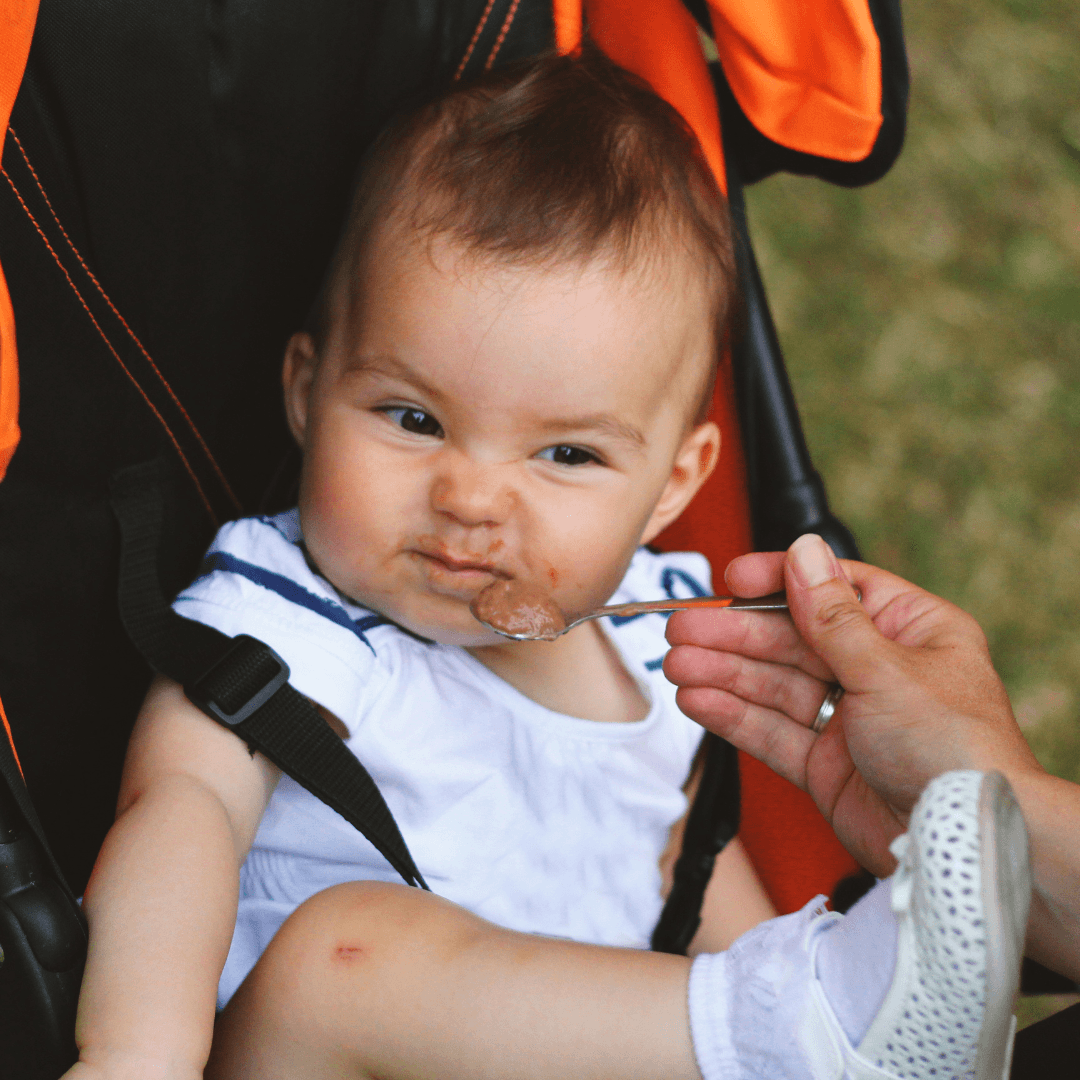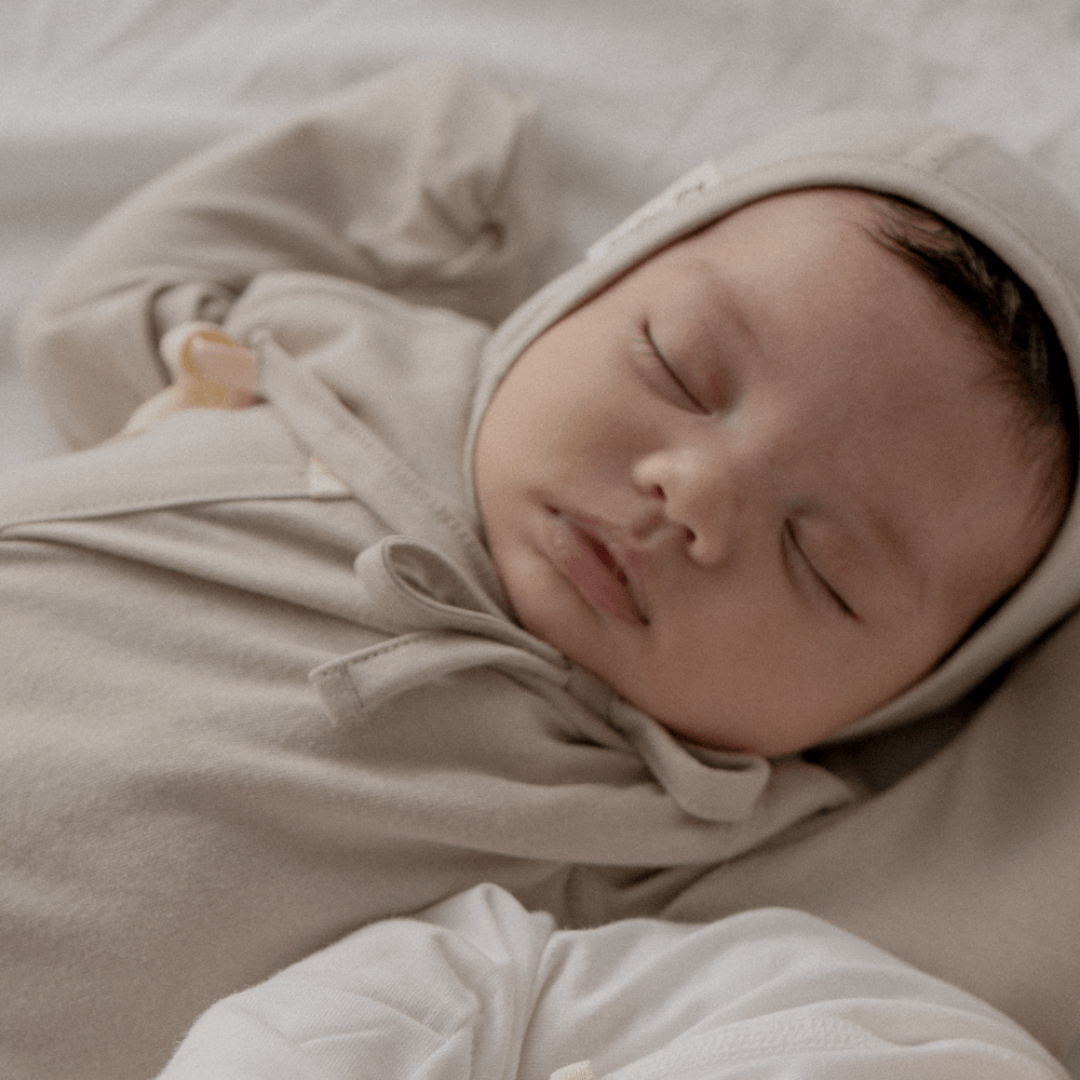
From 1 month to 12 months of age, how does our baby develop? Today, let's take a look at the developmental flow of our growing baby!
Infant Development from 1 Month to 12 Months
Physical and motor development of infants and young children.
This is the period of the most rapid physical growth in your baby’s life. Their weight increases about 3 times the rate compared to at birth, and their baby teeth appear from 4 to 6 months after birth. Some babies have their first teeth as early as 3 months.
Along with physical development, their motor development also develops rapidly. At this stage, babies can focus on their moving and manipulation ability. Mobility is literally the ability to move and control one's body. It develops in the order of moving the neck, turning over, sitting, crawling, standing, walking, then finally running.
The manipulation ability refers to the development of fine muscles to grasp or fiddle with an object using the hands and arms. As eye-hand coordination increases, it becomes increasingly possible for babies to focus on the desired object, touch the object, and grab and hold the object.
Their sensory function also develops; so basically the five senses necessary to observe the world are completed. Smell, taste, and hearing develop relatively early, and vision is limited at birth. By 3 months, they can recognise the entire shape of objects, and by 4 months, they can follow and look at slowly moving objects. During this time, let them experience the world through their five senses.
Cognitive and Language Development of Infants and Young Children
At this age, children are very fond of repetitive behaviors. This has a profound impact on children's cognitive development. Children do certain actions through trial and error and imitation, and they repeat these actions with pleasure.
Examples include sucking a finger or waving a rattle. In the beginning, these actions are simply repeated, but the cognitive ability develops until it is applied gradually.
We apply learned behavior to new situations and realise new learning through various trials. Around 6-8 months of age, they intentionally try a specific behavior and repeat the causative behavior in anticipation of an outcome.
They will gradually become more goal oriented. One of the famous qualities to be acquired at this time is the concept of 'object permanence'. It is the concept of realising that even if an object disappears from your eyes, it still exists.
By the age of 9 months, babies pass through the prelinguistic stage, which is babbling without any particular forms of speech. After 9 months of age, entering the one-word period (the timing may vary depending on the child), they can often say one familiar word, such as mom, dad, kakka, dog.
At this time, the word the child uses is simply 'mother', but it can have many different meanings. They can use the single word 'Mom' to say, 'Mom is hungry' or 'Mom is happy'.

Emotional and Social Development of Infants and Young Children
Emotions are specifically differentiated during the first two years. Within three months, babies learn emotions of discomfort, excitement, and pleasure. Within six months, they show a variety of emotions: excitement, displeasure, anger, disgust, fear, and pleasure, and by the time they turn around, they become accustomed to expressing love and affection.
By the age of two years, children develop emotional systems that closely resemble adults. 'Attachment' is the most important point in sociality at this time. Attachment is the bond you feel with the person you consider closest to you.
Around 6 to 8 months of age, children develop an attachment relationship with the person who takes care of them best. This is the time when a stable attachment can be developed so that they can develop positive peer relationships later on. In this period, communication with the primary caregiver is more important than the children of the same age.
To build a good attachment, be sensitive and respond appropriately to your child's needs. By establishing a relationship with their attachment figure, the child naturally decides whether the world is a trustworthy place, or a place that is difficult to believe and chaotic.
Some children start to be shy around 6 months of age. This means that your child is developing well, so don't worry too much.
---------------------------------------------------
Author: Jisoo Lee, Kindergarten Teacher
- Based on early childhood education theory and practical experience,
she introduces ways to get along with children.







